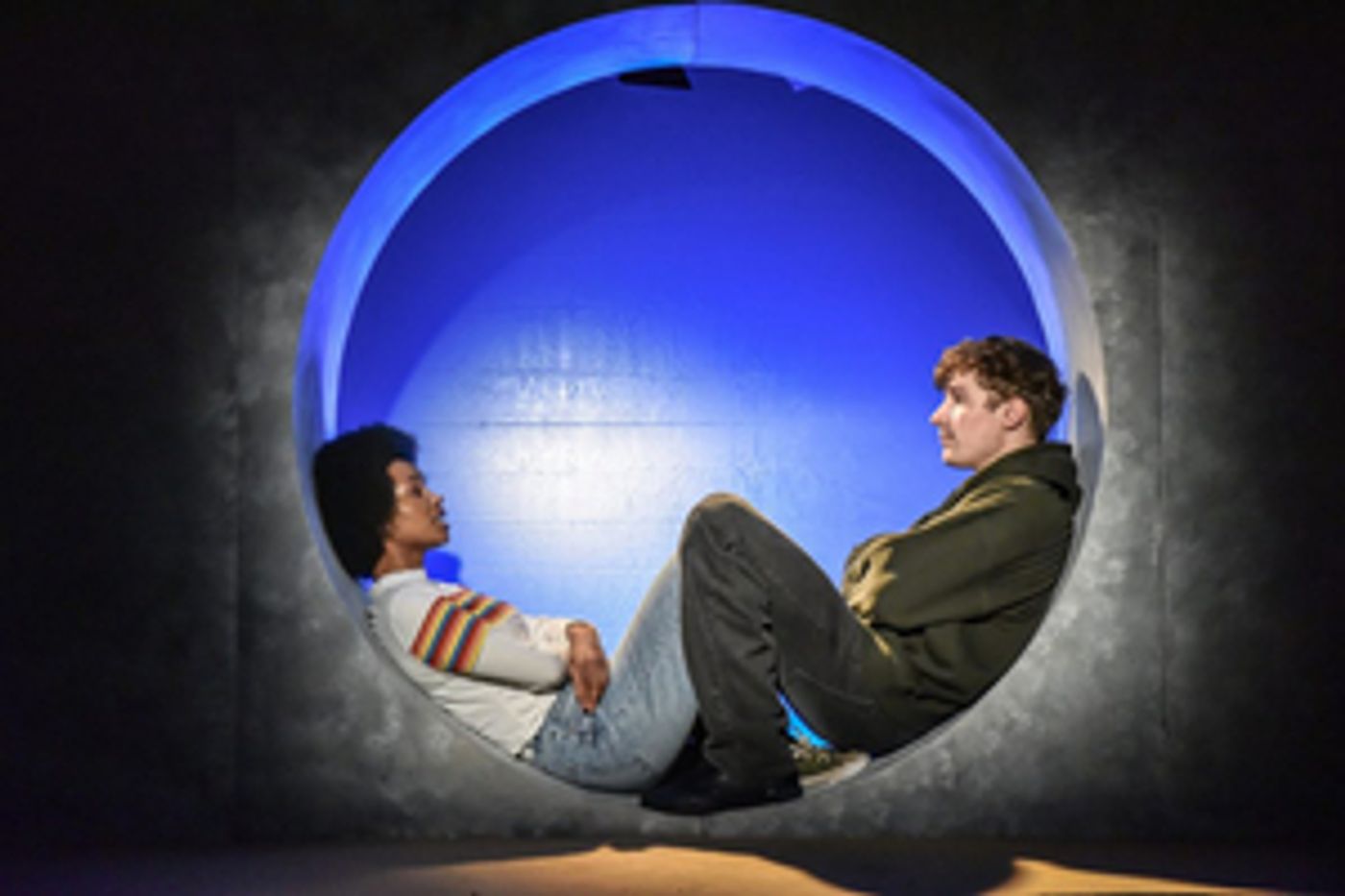
![]() When Lava was first staged at the Nottingham Playhouse in 2018, its central plot point of an asteroid hitting North London and causing thousands of casualties may have seemed implausible - over-dramatic, even.
When Lava was first staged at the Nottingham Playhouse in 2018, its central plot point of an asteroid hitting North London and causing thousands of casualties may have seemed implausible - over-dramatic, even.
The play opens with the character Rach speaking to the audience about her disbelief over the event, how ludicrous it feels. Now remounted at the Soho Theatre as we move out of a global pandemic, the themes of loss, and of solidarity in the face of unprecedented tragedy, feel very different.
Playwright James Fritz introduces us to Rach (Bethany Antonia), a girl living in a small town in the aftermath of the London disaster. She works at a call centre with Vin (Dan Parr), who can no longer speak. Rach is told that this is because his father died in London and does her best to help him - something that becomes increasingly challenging for both Rach and Vin's mother, Vicky (Kacey Ainsworth).
Rach also introduces Vin to Jamie (Oli Higginson), a family friend who has come to stay with her after his mother died in the disaster. As each character processes their own experiences of loss and trauma, layers of truth and lies are peeled away, resulting in a fascinating deep dive into how we assign value to different kinds of sadness.
Antonia as Rach is the heart of the play, engaged from the get-go and delivering every line with sparky, youthful confidence. She keeps the show grounded, offering an anchor between the more unstable male characters.
As London survivor Jamie, Higginson begins the show as the human embodiment of obnoxiousness - pushing back his hair and strumming his guitar in a fantastic portrait of the kind of man we all love to hate - before growing into a truly nuanced portrait of grief. Fritz has created a well-rounded character, getting under the skin of Jamie's seemingly hateable qualities. While Ainsworth has some nice moments, especially towards the end of the play, she never quite reaches the emotional depth of the young characters.
The standout performance, however, comes from Dan Parr as Vin. You would think it would be difficult to inspire laughter, pity, fear, and anger when your character is almost completely silent, and yet Parr does all this with just his face and movements. His performance becomes all the more impressive as the play draws near its end and the character's frustration and anger boils to the surface. It becomes hard to watch, in the best way.
One of the most interesting aspects of Fritz's script is the way it is structured: while there is no interval, it is divided into the five stages of grief. The script also includes with each a related statistic about the asteroid disaster, the first being "Death toll: 12,002".
This gives companies the challenge of if and how to include these - in this production, they are projected onto the back wall of the set, which is hugely effective, especially as an opening. Video Designer Louise Rhoades-Brown works magic in each of these transitions, creatively making the word - "Depression" or "Anger" - interact with Parr's body onstage.
This is a visually mesmerising production. Alongside the projections, designer Amy Jane Cook's set is simple and smart: a large hole is cut out of the back wall, big enough for characters to sit in, while a similar hole in the ground is filled with what appears to be soil or ashes. Not only does this convey the destruction of the "impact event", it also gives the directors plenty of opportunities to play with the idea of absence and loss, of "something missing".
The direction, from Laura Ford and Angharad Jones, is for the most part sharp and considered, using the endless possibilities of the set to their full potential and employing clever blocking choices to explore the changing relationships between each of the characters. A scene near the end, where Vin and Jamie share some beers and some secrets, sticks in the memory as particularly touching and well executed (and also features a spectacular monologue from Higginson).
This production's greatest challenge, however, is the handling of humour. Having previously read the script, I was taken aback by the amount of audience laughter - while the writing is witty and self-aware, I wouldn't have described it as a comedy at all. Ford and Jones really emphasise the comedic beats of the script, and, when combined with the energy and commitment of the cast, the play becomes consistently funny.
At times, this is undoubtedly a success, bringing light to the dark themes and also interrogating our habit of laughing in the face of tragedy and grief. This is especially interesting surrounding the character of Jamie, who we are encouraged to laugh at throughout - especially when he gets his guitar out for a neverending serenade. Audience members are forced to think about why his insistence on mentioning the disaster at every possible moment is funny and why it's annoying.
At the same time, however, there are moments where it feels like the comedy goes too far, becoming almost insensitive. It isn't always clear whether this comes from the direction, acting choices, or just audience reactions, but it's strange to experience in the play's heavier moments. The balancing act between comedy and tragedy is something that feels more secure as the play progresses, however, perfected in the final scenes.
The journey of this show is a fascinating example of how real world events can change the significance of a script entirely. Lava is a play that unpicks experiences and perceptions of grief in a truly unique, engaging way, and one that deserves to have a very long life.
Lava runs at the Soho Theatre until 30 April
Photo credit: Robert Day
Reader Reviews
Videos

